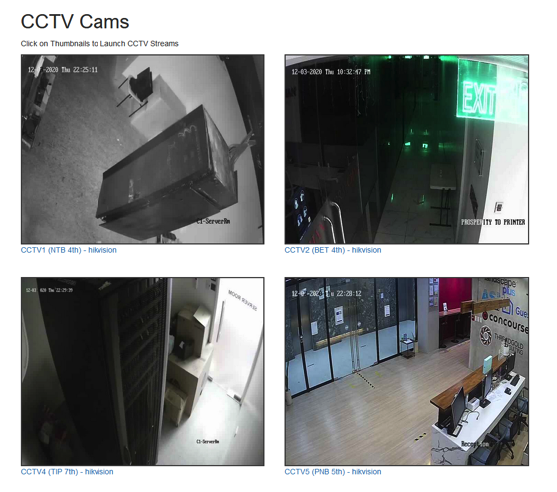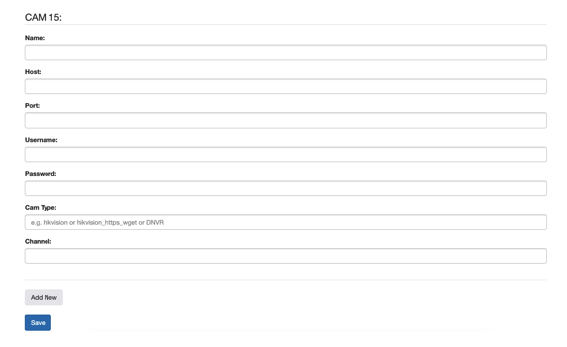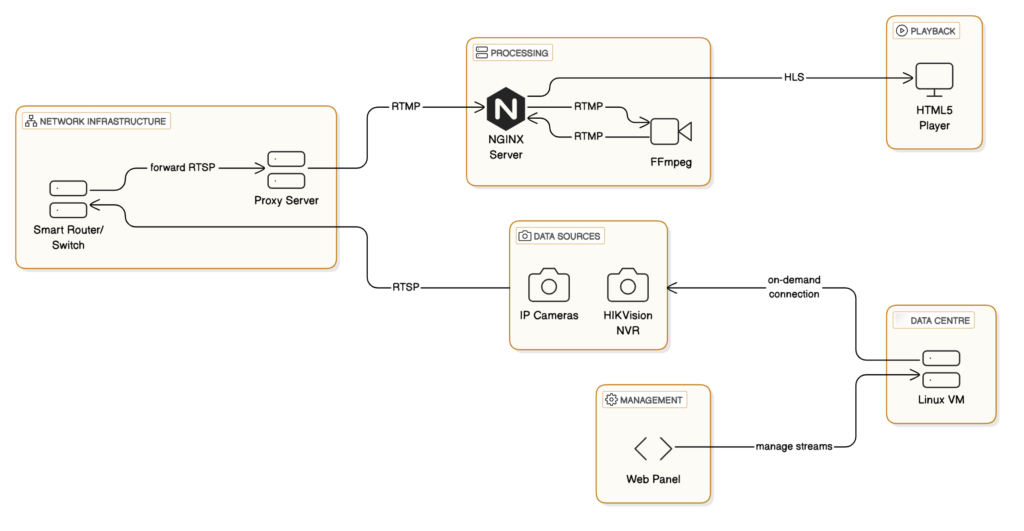Introduction In this case study, we explore the implementation of an efficient live streaming solution using HIKVision NVRs and IP cameras. The objective was to convert RTSP streams from various sources into a widely supported HLS format, making them accessible via an HTML5 player. The solution integrates NGINX, FFmpeg, and a custom-built web panel for seamless management.

Project Overview
- Source Streams: RTSP streams from NVR, DNVR, CCTV, IPCam, and HIKVision devices.
- Streaming Pipeline: RTSP -> RTMP -> HLS
- Technologies Used:
- NGINX with RTMP module
- FFmpeg for transcoding
- Laravel-based web panel
- HTML5 Player for HLS playback
- Live stream thumbnail generation
Implementation Details
- Capturing RTSP Streams: RTSP URLs were configured for different HIKVision cameras and NVRs, formatted as:
rtsp://USER:PASSWORD@IP-Address:554/Streaming/Channels/102/?transportmode=unicast
- Conversion to RTMP: FFmpeg was used to pull RTSP streams and push them to an NGINX RTMP server:
ffmpeg -i “rtsp://USER:PASSWORD@IP-Address:554/Streaming/Channels/102/?transportmode=unicast” \
-c:v libx264 -preset veryfast -b:v 1000k -maxrate 1000k -bufsize 2000k \
-c:a aac -b:a 128k -f flv rtmp://localhost/live/stream_key
- RTMP to HLS Conversion: NGINX RTMP module was configured to generate HLS segments:
application live {
live on;
hls on;
hls_path /var/www/html/hls;
hls_fragment 5s;
hls_playlist_length 30s;
}
- Web Panel Development: A Laravel-based panel was built to manage streams, generate live thumbnails, and provide real-time statistics.

- HTML5 Player Integration: The web panel incorporated an HLS-compatible HTML5 player for playback.
Network Architecture and On-Demand Streaming
- The camera is connected to a smart router/switch, which forwards the RTSP feed on port 554 to a proxy server.
- The system includes 14 NVRs, each installed at different office locations and connected to a Data Centre via Layer 2 Network connectivity.
- A dedicated Linux VM in the Data Centre is provisioned to manage video streaming.
- The application running on the VM connects to each NVR and establishes a video stream only when a user requests it through the website.
- Streams are dynamically started and stopped based on user activity, conserving bandwidth and resources.
- A sample application is included that enables searching recordings and extracting footage as needed.

Challenges and Solutions
- High Latency: Optimized HLS fragment size and playlist length for reduced latency.
- Stream Authentication: Secure access with token-based authentication.
- Scalability: NGINX load balancing for handling multiple streams.
Conclusion This project successfully delivered a reliable live streaming solution for HIKVision NVRs. By leveraging NGINX, FFmpeg, and a custom web panel, we ensured seamless management and playback of RTSP streams via HLS. Future enhancements may include adaptive bitrate streaming and cloud-based scalability.
